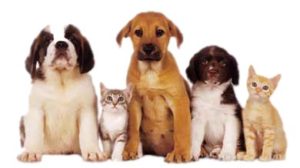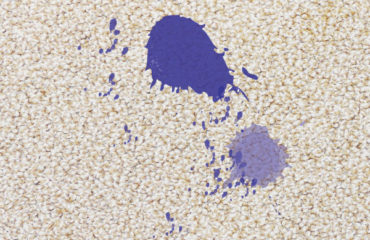 Odor and staining problems from urine are among the most perplexing problems the professional cleaning technician is faced with today
Odor and staining problems from urine are among the most perplexing problems the professional cleaning technician is faced with today
In this article we will focus our discussion on the unique challenges encountered in removing urine residues from upholstery fabrics and carpet. To better understand why urine stains and odors may be difficult to remove, its helpful to first understand the “chemistry of urine”:
When initially discharged, urine is mildly acidic and then changes its nature because of bacterial processes and becomes more alkaline in nature. The process of decomposition that creates this pH change also produces the characteristic “ammonia” smell often associated with urine contamination.
When urine is relatively “fresh”, any yellow stain is from the natural pigments in the urine, and should easily rinse from most fabrics. As time passes, the protein content of the urine residue attracts soil and takes on a brown appearance. This brownish residue becomes more difficult to remove, but proper spotting procedures should restore all but the most delicate fabrics.
When a very old urine stain becomes yellow, especially on dark fabrics, this is often permanent color loss caused by the chemical content of the stain, and will not be removable.
SPOTTING PROCEDURES:
Fresh Urine Spots: You will encounter these types of spots when your customer calls you immediately after the accident, or when called to perform a warranty service.
A. Always Test For Colorfastness!
Also, qualify that the urine may have damaged some of the finish or
sizing that may have been applied to the natural fiber fabrics, and
that any “water marking” may be permanent.
B. Rinse with cool, clear water.
Use a DryMaster Pet Stain Remover detergent if necessary to remove
soil, but fresh urine is easily removed with water alone
C. Vacuum and towel dry the area.
The stain should be removed. However, the urine may have
penetrated into the padding or cushion foam. Consider injecting
an enzyme deodorant (Odorcide) into padding, and possibly removing the
cushion foam foam further treatment or replacement.
NOTE: Non colorfast materials that may be beneath the fabric, and therefore impossible for you to inspect or test, may cause dye to migrate to the surface. Wicked moisture may also cause watermarks. Be sure to qualify these possibilities and warn your customer than you cannot be responsible for such events.
Older Urine Spots or Stains: These are more typically what you’ll be asked to clean. Always pre-qualify to your customer that even a darker stain that appears to be restorable may be hiding color loss, water marks, or other damage. Also inform your customer that there may be a more noticeable odor once you begin to treat the area with various spotters, and that deodorization procedures will be needed at this point.
A. Pretest for colorfastness!
Note: The long term effect of the urine’s residues may also have
made the dyes unstable in the stained area, so no guarantees should
be made regarding the fabrics condition after spot removal
techniques are undertaken.
B. Apply DryMaster Pet Stain Remover, blot and rinse.
This procedure will break down the urine salts, and the remaining
residues will rinse free from the fabric or carpet.
• If any discoloration remains, apply again the Pet Stain Remover, and allow dwell time. Rinse the fabric with warm
(not hot) water. Towel or air dry to see if any stain remains.
NOTE: Many high pH traffic lane cleaners designed for restaurant
carpet rely more on high pH than actual enzymes, and using such
products on any upholstery fabric is risky, especially if the
fabric contains natural fibers. Only use enzyme products that
are mildly alkaline such as DryMaster Pet Stain Remover (less than 10 on the pH scale).
• If any further “yellow” remains, a mild reducing or oxidizing
agent may be applied. DryMaster Brown Away is one of the products that can be used.
Urine damage, especially older, is very difficult to remove from durable, synthetic carpet fibers, and will usually be much harder to remove from the more delicate upholstery fabrics.
Be sure to qualify this to your customer and always pretest extensively before exposing any upholstery or carpet fabric to various spotting agents. Remember, this is a specialized service and you should charge accordingly.



